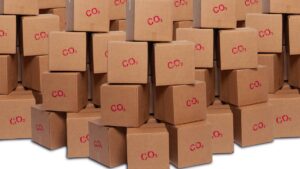ASX Green Energy Stocks: Global solar spend to hit US$15bn by 2030; FFI nabs stake in Sparc

FFI and Sparc will work together to develop and commercialise green hydrogen technology created by the University of Adelaide and Flinders University. Pic: Getty
Global non-residential solar operations and maintenance (O&M) spend is expected to hit US$15 billion by 2030, global energy consultancy Wood Mackenzie says.
New research released by the firm yesterday indicates that increasingly competitive auction prices, coupled with rising labour and supply chain costs, mean service vendors face challenges to stay profitable.
Woodmac wind and solar senior manager Leila Garcia da Fonseca said despite market growth, low margins could keep new entrants out.
Total global solar installed capacity is expected to reach 2.2 terawatts by 2030, signalling rapid growth for the solar O&M sector over the next decade with a 2030 market opportunity of US$15 billion, nearly a fourfold increase on 2020 figures.
“The US will be the most attractive single market, accounting for US$3.5 billion of the total,” she said.
“On a regional basis, however, the Asia Pacific region leads with US$5.7 billion of the total spend.”
To ASX news
FFI acquires stake in Sparc Technologies to develop green-hydrogen
Twiggy Forrest’s green leg Fortescue Future Industries (FFI) has snapped up an interest in Sparc Technologies (ASX:SPN) new joint venture Sparc Hydrogen – a company which has an exclusive licence to develop and commercialise green hydrogen tech created by the University of Adelaide and Flinders University.
Sparc Hydrogen is researching technology which would see green hydrogen produced by only sunlight and water (photocatalytic water splitting coupled with solar radiation), instead of renewable energy and electrolysis.
The initial research project will look to develop a process known as Thermo-Photocatalysis, which employs the sun’s radiation and thermal properties to convert water into hydrogen and oxygen.
Adopting this process to produce green hydrogen means that independent generation of renewable energy from wind farms or photovoltaic solar panels does not need to be produced for hydrogen production, nor does the process of electrolysis need to be employed.
FFI’s initial stage 1 investment of $1.8 million will result in FFI acquiring a 20 per cent interest in Sparc Hydrogen, a joint venture with Sparc Technologies and the University of Adelaide.
At stage 2, FFI could invest a further $1.475 million into Sparc Hydrogen for a total investment of $3.275 million over 4.5 years to earn a 36 per cent interest in Sparc Hydrogen.
The technology developed to date was supported by ASTRI (Australian Solar Thermal Research Institute), with contributions totalling $2.5m over a five-year period from University of Adelaide and Flinders University.
Major Project Status granted to Strike Energy
Major Project Status has been awarded to Strike Energy’s (ASX:STX) Project Haber in Western Australia’s Mid-West region by the Australian Federal Government, where it is looking to support the integration of low carbon technologies and renewable hydrogen.
This granted status gives Strike access to the Major Projects Facilitation Agency for approvals, project support and coordination.
STX said Project Haber aligns with Australia’s National Hydrogen Strategy and, through the domestication of supply chains, has the potential to reduce the carbon intensity of the urea used in Australia by 60%.
“As the most commonly applied fertiliser in broad acre farming, Project Haber has the potential to play an important role in the reduction of the carbon intensity of Australian farming,” the company said this morning.
Minister for Energy Angus Taylor said STX’s facility has the potential to deliver “significant reduction (in) Australia’s urea manufacturing sector.”
“It also aims to reduce the reliance of Australian farmers on international supply chains to enhance our food security, given more than 90 per cent of urea is currently imported,” he said.
Unlocking McIntosh Project potential for hydrogen energy transition
Hexagon Energy Materials’ (ASX:HXG) plan to provide platinum group elements (PGEs) for the use in fuel cell and electrolyser manufacture has been boosted by the latest interrogation of historical data at its McIntosh Nickel-Copper-PGE Project.
This review has highlighted an under-explored area at the Melon prospect – one of the company’s planned 2022 drill targets within Western Australia’s Kimberley region.
An intersection of 20m at 0.75g/t PGE as well as other intersections have been identified, prompting a further review as well as resampling for nickel-copper-PGEs of all drill core held by Hexagon.
Around 5,200 total samples are now undergoing a comprehensive review, HXG said, with completion set for February 2022 and results to aid in the refinement of Hexagon’s field season work plans.
HXG managing director Merrill Gray said McIntosh is core to the company’s future energy material strategy moving forward.
“We are focussed on unlocking this asset’s value at a time where nickel prices are at a 10-year high and there is great value being placed on PGEs for use in fuel cell and electrolyser manufacture – key to the hydrogen energy transition,” she said.
Pilot Energy terminates Triangle Energy transaction
Pilot Energy (ASX:PGY) has revealed that it is terminating the sale agreement of the WA-481-P exploration permit, as well as the formation of the Cliff Head wind and solar joint venture with Triangle Energy on the basis that conditions have not been satisfied or waived by the cut-off date.
Back in November 2020 the two companies entered into an agreement, under which Triangle would acquire a 78.75% interest in and operatorship of the offshore Perth Basin exploration permit WA481-P.
But today, PGY has has today advised Triangle in writing that it is terminating the sale agreement – meaning the agreements “do not have any binding effect and the relevant parties are to be immediately released from any obligations”.
As a result, Pilot will retain operatorship of WA-481-P and the Cliff Head wind and solar project.
Meanwhile, it said feasibility studies are advancing at the Mid West Renewable Energy Project and Mid West Blue Hydrogen and Carbon Capture Project, where the company expects to release results over the course of the next eight weeks.
Related Topics
UNLOCK INSIGHTS
Discover the untold stories of emerging ASX stocks.
Daily news and expert analysis, it's free to subscribe.
By proceeding, you confirm you understand that we handle personal information in accordance with our Privacy Policy.








